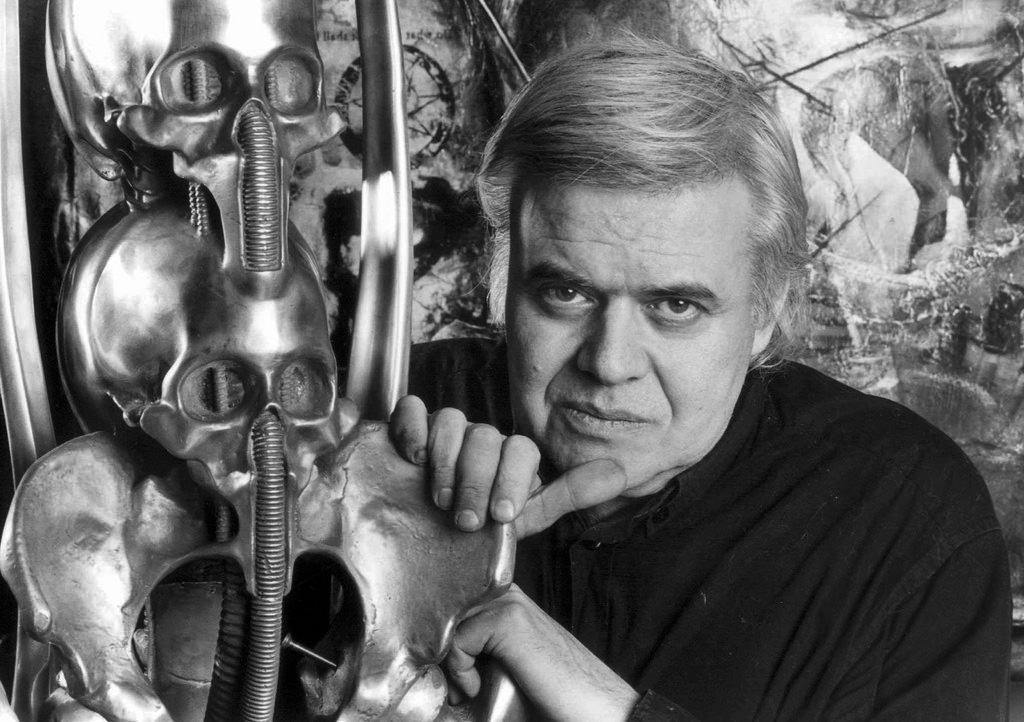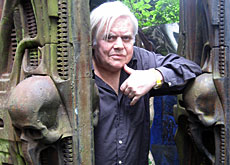‘Alien’ creator H.R. Giger is dead

The renowned Swiss artist H.R. Giger has died at the age of 74, as a result of injuries sustained in a fall. Giger, who passed away in a Zurich hospital, was most famous for the alien monster he created for the movie of the same name.
The terrifying creature and sets he created for Ridley Scott’s film earned him an Oscar for special effects in 1980. In the art world, Giger is appreciated for his wide body of work in the fantastic realism and surrealistic genres.
His talent for scaring movie audiences was repeated in Poltergeist 2 (1986), Alien 3 (1992) and Species (1995). Computer game fans were able to enjoy his work in Dark Seed in 1995.
Film work was just one of his talents. Giger is also known for his sculptures, paintings and furniture. The H.R. Giger Museum, inaugurated in the summer of 1998 in the Château St. Germain, is a four-level building complex in the historic, medieval walled city of Gruyères. It is the permanent home to many of the artist’s most prominent works.
However his art is not for people with weak nerves. Critic Fritz Billeter once wrote that Giger’s work was “loaded with eroticism tending often towards the shocking and the sadistic” and sometimes taking the form of an “orgiastic cult”.

More
H.R. Giger and his work
‘Acid view’
Giger’s so-called biomechanoids represent a large share of his work. His representations of these creatures is a mixture of human and mechanical parts, with a strong focus on sexuality that can be disturbing for the viewer.
These biomechanoids are to be seen in many of Giger’s paintings and drawings, but the theme is also common to his sculptures and furniture.
In a swissinfo.ch report to mark Giger’s 70th birthday, Tobia Bezzola, curator of Zurich’s fine arts museum, said he appreciated Giger and worked with him on two exhibitions at the museum in 1995 and 2005. Bezzola said he particularly enjoyed the artist’s acid view of society that occasionally led him to blasphemous outbursts.
“Giger is for me one of the most important Swiss artists of the second half of the 20th century,” said Bezzola.
He pointed out the artist’s use of film and other art forms that helped people sharpen their visual perception. He also believed that Giger should be as highly rated as Swiss giants such as the architect Le Corbusier or fellow artist Max Bill.
Recognition
Hans Rudolf Giger was born in Chur, canton Graubünden in 1940. He studied architecture and industrial design at Zurich’s School of Applied Arts.
He began work as an interior designer in 1966, before becoming a full-time artist and filmmaker in 1968.
Giger’s biggest problem was that he was not always appreciated by Swiss culture specialists. His decision to become involved in popular culture forms such as fantasy films, record covers and so forth led to worldwide recognition and success that may have made him suspect to some.
Giger’s album covers for Debbie Harry and the band ELP were voted among the 100 best in music history in a survey of rock journalists.
“In America, there wouldn’t have been a problem,” Bezzola told swissinfo.ch. “New York’s museum of modern art is running a Tim Burton exhibition. His characters are drawn directly from graphic novel genre or horror movies.”
Despite his Oscar, Giger was never really recognised by the establishment in Switzerland; he was ignored between 1967 and 1970 when he applied for federal grants.

In compliance with the JTI standards
More: SWI swissinfo.ch certified by the Journalism Trust Initiative












You can find an overview of ongoing debates with our journalists here . Please join us!
If you want to start a conversation about a topic raised in this article or want to report factual errors, email us at english@swissinfo.ch.